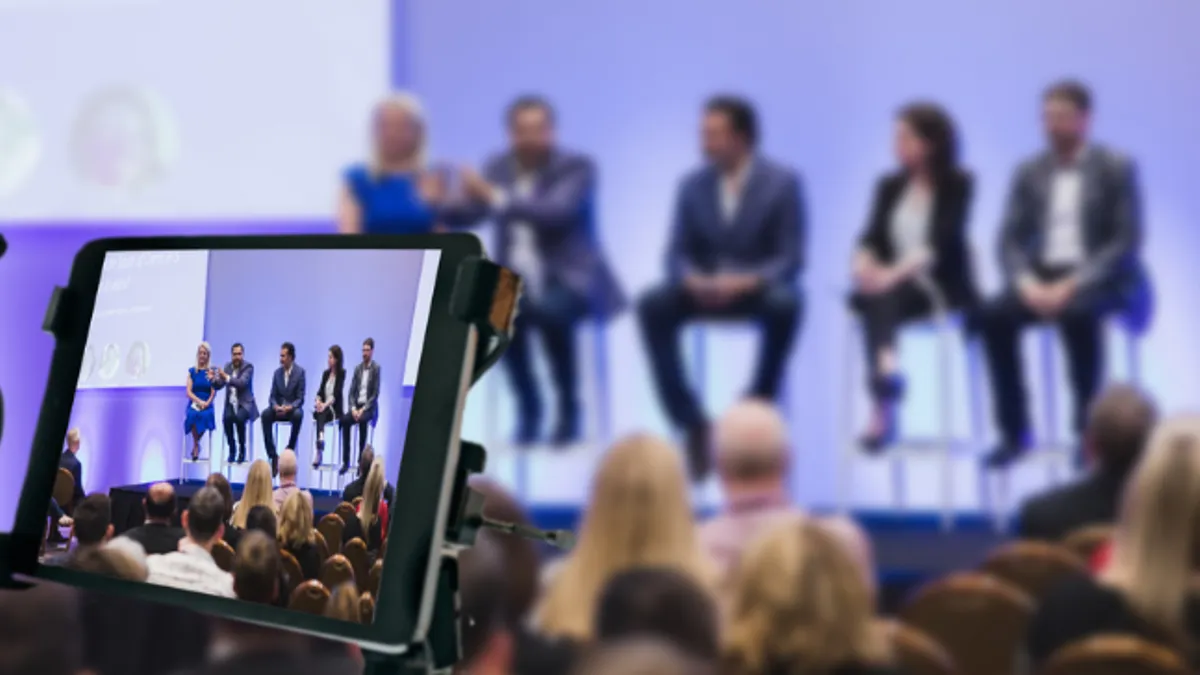The event team for Cvent, a leading provider of event tech, understandably oversees a significant number of events each year. They also are responsible for planning the company's annual user conference, Cvent CONNECT. In 2021, the team affectionately known as The Connectors, took this flagship event hybrid for the first time. In this article we'll get an insider's view of how they went about activating leads from this event, and get tips you can use for your own event program.
Tip #1: Understand the Data
At Cvent we categorize our data collection into three stages: pre-event, during the event, and post-event, and we'd recommend you do the same.
Before the Event
Pre-event, the key data elements you could capture would be segmentation and registration-related data. Segmenting your audience based on interests and demographics will allow you to deliver relevant content and experiences at your event.
During the Event
During the event, focus on collecting two groups of data. The first group of data is around attendance and sessions, and this will provide critical information about what's resonating with your audience.
The second group of data is related to engagement elements that let you know which activities your attendees are interested in and what topics they engage with most.
After the Event
Finally, post-event data includes survey responses, engagement scores, event cost, revenue, and ultimately, the ROI. This data lets you know if your event was successful, what worked well, and what areas should be improved.
Tip #2: Collect Data Purposefully
For Cvent CONNECT, we spent a lot of time curating what data to collect to be sure we could turn the learnings from every conversation and every footprint throughout the event into the next step for sales. We worked closely with the sales team to ensure we asked the right questions during registration, got the right people registered, and knew who we were working with before the event.
Tip #3: Measure Two Sets of Goals
Producing a hybrid event means that you have more data and insights available to you. But you also need to weigh the value of in-person and virtual data differently. For example, with Cvent CONNECT we went through a very methodical process to identify how to score engagement throughout the event, and assign different scores for attending a session in person versus attending a session virtually.
Tip #4: Enlist Help
Don't be afraid to look to your internal teams, technology, and community to help produce a great event.
Call on your Marketing Operations Team
Together with the event marketing and sales teams, our marketing operations team helped simplify event processes and make sense of event data and proving ROI. They assisted with several out-of-the-box integrations before, during, and after the event; and they helped orchestrate the use of various marketing technologies.
Use Technology to Transform Data into Opportunity
Use Engagement Scoring
Using a single platform with engagement scoring capabilities will allow you to create a detailed profile of each attendee as well as the community you're hosting. You get a clear representation of the entire attendee journey. By assigning an engagement score, your marketing and sales teams will be able to curate different follow-up messages.
Create a Reporting Framework
Because the amount of data collected at hybrid events can be daunting, you'll need a technology partner with robust reporting capabilities.
Rely on your Community
It is a new landscape, and we are all in this together. Get your hands on whatever resources you can to help you gain confidence. At Cvent, we're taking whatever knowledge we can and putting it into the hands of our peers, like with this blog post! But wed also love to share even more tactical how-to insights with you. So, if you're up for it, read Cvent's eBook Keeping Up with the Connectors for a full chapter around post-event activation , as well as other chapters covering all the nitty gritty on how we took Cvent CONNECT to a hybrid event format.










